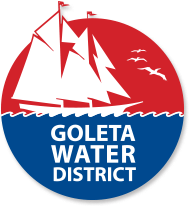Frequently Asked Questions
Q: Why is my bill the same from month to month – to the penny? How can that be?
A: The District bills water usage in hundred cubic feet (HCF) which is one full turn of the dial on the meter (1 HCF = 748 gallons), so it is not uncommon for customers to be billed the same amount several months in a row unless there is a significant change in outdoor watering or the residence is vacant for part of the billing period. Because the District rounds down to the nearest full HCF and does not bill on tenths or hundredths of an HCF, the same monthly consumption amount may be reflected on several bills. As a portion of the bill is a fixed monthly meter service charge, for customers who consistently use the same amount of water each month their total bill may be identical to the previous bill down to the penny.
Q: Why did my usage jump unexpectedly last month? Learn about easy fixes for common problems that could be driving high water use.
While water use typically increases during the hotter summer months, an unusually high water bill may be the result of a leak, or a change in water use that moves you to a higher water tier (which is billed at a higher rate). The District offers free Water Conservation Checkups to help customers identify the most common causes of high water use, but this link here are some questions to ask when you see a higher than normal bill:
Could your sprinklers be overwatering?
Outdoor irrigation is typically the largest source of residential water use so evaluating landscaping is often the best place to start. Wet pavement is a sign your system may be overwatering. Runoff can result from the application of too much water too quickly, or can indicate that sprinklers are improperly sited (due to being on a slope). Make sure sprinklers are installed so that they are not watering the sidewalk. Overwatering can also result from an improperly programmed irrigation timer, or a controller that has reset due to a power outage or dead battery so check your irrigation system periodically.
The good news is that dialing back your irrigation and making simple changes to your watering schedule can save you water and money without impacting the look or health of your landscaping. Contact us by email at Turn on Javascript! or call the District at 805-964-6761 to schedule a free Water Conservation Check Up, or go to WaterWiseSB.org to trouble shoot common irrigation challenges.
Has the weather changed?
Don’t discount seasonal variability. If you water outdoors your water use is likely significantly higher during the hotter summer months. To get a better idea of how much compare your current month’s bill to your use over the same time period last year. An August to August comparison can reveal how much your usage has increased, while a comparison of your August bill to your January bill is typically a good indicator of how much of your use is attributable to your outdoor landscaping during the summer months. Some landscaping, such as lawns, require significant amounts of water. To reduce summer water needs consider switching out infrequently used areas such as front yards and park strips with waterwise landscaping.
Do you have a leak?
A running toilet or a dripping faucet may not seem like a big deal, but even small leaks can cost you. For example, a toilet leak could waste 5,000 gallons or more a month, and if left unfixed could cost nearly $1000 a year. Dye tablets that can be used to diagnose a leak, and new toilet flappers to fix the problem are available to customers free of charge under the District’s Water Saving Device Program. A swimming pool or irrigation leak could result in even higher usage. District code requires leaks be fixed within 48 hours of discovery.
Have you changed your water use?
Guests, kids being home more during the day over summer break, or an additional roommate can all increase usage. To determine how many gallons per person are being used per day, simply multiply the number of Hundred Cubic Feet (HCF) on your bill by 748, then divide by the number of days in the month and the number of people in the household. For example, the formula for a household of 4 using 6 HCF in an average 30 day month would look like this:
6 HCF X 748 Gallons = 4,488 gallons
4,488 gallons /30 days in a month = 149.6 gallons used per day
149.6 gallons/4 people = 37.5 gallons per person per day.
Additional sources of unexpected water use can include problems with a water softener that causes it to cycle continually, the use of a reverse osmosis system or water cooled air conditioners, and filling or topping off a swimming pool. Make sure to maintain any additional water filtration systems installed in your home, and keep pools covered. Pool covers are an eligible rebate activity under the Smart Landscape Rebate Program.
Q: What is the meter charge on my bill?
A: The bill customers receive includes both a fixed monthly charge (listed on the bill as the meter charge) and a variable or per unit charge for the amount of water used each month. The meter charge covers fixed costs related to the base costs of providing water (including, for example, water treatment, delivery, maintenance, repairs and electricity costs among others). These are costs to the District regardless of whether a customer actually uses the water. Larger meters pay a higher meter charge since they have access to more water and thus pay a larger portion of the infrastructure.

